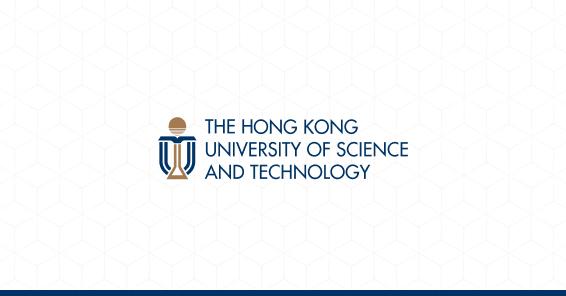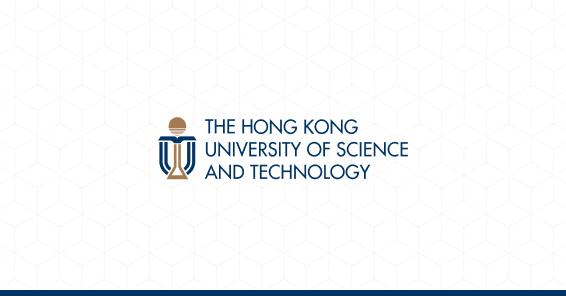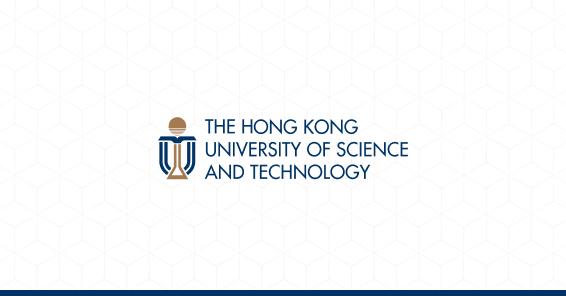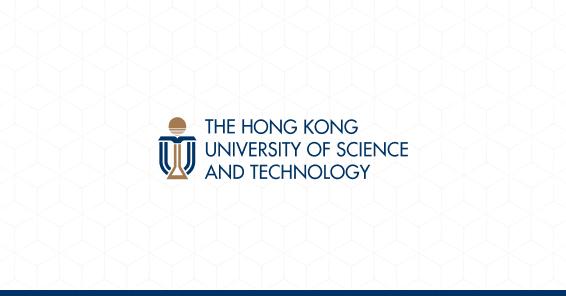News & Events
2007-12-12
Pre-university students with exceptional promise from around the world will be able to flex their intellectual muscles during a 3-week program next summer. Talented Youth Summer Program 2008 (the Program) is co-organized and co-sponsored by The Hong Kong University of Science and Technology (HKUST) and Savantas Policy Institute (Savantas), and will be held from 13 July to 3 August, 2008.
Taught by distinguished faculty members and academic experts from HKUST and Stanford University, the Program will carry university credits which could be counted towards future undergraduate studies. Speaking at a news conference to announce the Program today (Wednesday, 12 December), HKUST Vice-President for Academic Affairs Prof Roland Chin said, “Talented Youth Summer Program will help nurture these extraordinary students by expanding their horizons and challenging them to realize their full potential. Students will be recruited from around the world, in Hong Kong and from the Mainland.” The Program will help participants achieve the following objectives: 1. Explore and develop their full potential;
2. Achieve personal goals while maintaining harmony with others; and
3. Become global citizens by realizing that the contribution of the whole can be far greater than the sum of its parts. Mrs Regina Ip, Chairperson of Savantas Policy Institute, said that the core vision of Savantas is to help Hong Kong transform into a knowledge-based economy; and such development will not be possible without an investment in training and education. She is pleased that Savantas and HKUST can work together towards breeding a new generation of local leaders. “Advancements in science and technology are the driving force for economic growth in recorded history,” said Prof Nelson Cue, Program Director and Professor Emeritus of Physics at HKUST. “New frontiers in biotechnology have now brought the world into the ‘Bioterials Age’. Gifted youngsters, being the potential future leaders of the 21st century, need to equip themselves not just with book knowledge, but the ability to think critically, and the breadth of mind to assume new responsibilities.” With the theme “Accelerated Societal Development through Science and Technology”, the 2008 program will allow participants to engage in a full array of activities including lectures, laboratory experiments, group projects, discussions, educational tours and recreational programs. Applicants are to apply with recommendation from their school principals. In addition to taking the core course – Societal Development through Science and Technology, students can opt for electives on Critical Thinking, Global Climate Change and Energy Issues, Introductory Game Theory and Frontier Techniques in Biotechnology. Participants will also have the option of joining a study tour to the Nansha IT Park and manufacturing base in South China. Read more
Taught by distinguished faculty members and academic experts from HKUST and Stanford University, the Program will carry university credits which could be counted towards future undergraduate studies. Speaking at a news conference to announce the Program today (Wednesday, 12 December), HKUST Vice-President for Academic Affairs Prof Roland Chin said, “Talented Youth Summer Program will help nurture these extraordinary students by expanding their horizons and challenging them to realize their full potential. Students will be recruited from around the world, in Hong Kong and from the Mainland.” The Program will help participants achieve the following objectives: 1. Explore and develop their full potential;
2. Achieve personal goals while maintaining harmony with others; and
3. Become global citizens by realizing that the contribution of the whole can be far greater than the sum of its parts. Mrs Regina Ip, Chairperson of Savantas Policy Institute, said that the core vision of Savantas is to help Hong Kong transform into a knowledge-based economy; and such development will not be possible without an investment in training and education. She is pleased that Savantas and HKUST can work together towards breeding a new generation of local leaders. “Advancements in science and technology are the driving force for economic growth in recorded history,” said Prof Nelson Cue, Program Director and Professor Emeritus of Physics at HKUST. “New frontiers in biotechnology have now brought the world into the ‘Bioterials Age’. Gifted youngsters, being the potential future leaders of the 21st century, need to equip themselves not just with book knowledge, but the ability to think critically, and the breadth of mind to assume new responsibilities.” With the theme “Accelerated Societal Development through Science and Technology”, the 2008 program will allow participants to engage in a full array of activities including lectures, laboratory experiments, group projects, discussions, educational tours and recreational programs. Applicants are to apply with recommendation from their school principals. In addition to taking the core course – Societal Development through Science and Technology, students can opt for electives on Critical Thinking, Global Climate Change and Energy Issues, Introductory Game Theory and Frontier Techniques in Biotechnology. Participants will also have the option of joining a study tour to the Nansha IT Park and manufacturing base in South China. Read more
2007-12-11
Five Hong Kong University of Science and Technology (HKUST) professors and their teaching teams were honored today(11 December) with Teaching Innovation Awards for successfully introducing new ideas, techniques and practices in teaching.
HKUST President, Prof Paul Chu, presented the awards at the third Teaching and Learning Symposium, a biennial event to promote novel teaching and learning at the University.
The five winners are:
Prof Jogesh K R Muppala, Department of Computer Science and Engineering
His innovative use of Web 2.0 technologies, like Blogs and Podcasting, provides a useful mechanism for instructors in higher education to enhance their course content, by offering additional channels for information delivery to their students and enhancing collaborative and cooperative learning. For example, a blog can be used for delivering additional information like course announcements, links to interesting websites and articles relevant to the course. Podcasting is a means of delivering online recorded audio of classroom lectures to enhance the course materials.
Prof David P Rossiter & Team, Department of Computer Science and Engineering
Prof Rossiter employs a web-based voice tool, the Gong system designed primarily for use in education, especially language learning. This system allows people to communicate using text and voice over the Internet. Students and teachers can participate in different discussion boards in the system. Inside these boards they can leave text and voice messages and they can also listen to and reply to messages from other people on the boards. It offers great assistance to language learners worldwide.
Prof Mike K P So , Department of Information and Systems Management
Prof So has developed an innovative teaching methodology—Problem-based Learning with Constructive Alignment (PBL/CA) that maps learning objectives and teaching activities to learning outcomes. It demonstrates an excellent implemention of outcome-based education.
Prof Philip I K Sou & Team of the Department of Physics
Prof Sou has introduced a two-way learning method to nurture young researchers. He selected UG students to develop cutting–edge science and technology based on recent developments or inventions by faculty members. The research outcomes are used as teaching kits in existing courses and presented to secondary school students. Thus, students are advised by faculty and faculty are in turn inspired by students.
Mr Sean W J McMinn, Language Centre
Mr McMinn has fostered active learning with podcasting technology, providing a platform for students to practice English writing, listening and reading skills in a real life situation. Students and staff from all departments are invited to contribute stories, notices or comments to each podcast, to create an English-speaking community on campus.
The Teaching Innovation Awards is a biennial event that promotes novel teaching and learning at the University. At the Symposium, President Paul Chu presented the awards to the winners. The keynote speaker Prof Karl A. Smith, the Morse-Alumni Distinguished Teaching professor at the University of Minnesota, gave the keynote address on ” Designing Innovative Higher Education Programs : Insights from Research and Practice” to share his experiences of how to design courses and programs to ensure that they lead to enhanced student learning . Prof Karl A. Smith is a distinguished educator. He has been at the University of Minnesota since 1972 and is in phased retirement as Morse-Alumni Distinguished Teaching Professor.
The Teaching and Learning Symposium was co-organized by HKUST’s Senate Committee on Teaching and Learning and the Center for Enhanced Learning and Teaching (http://celt.ust.hk/). To coincide with the Symposium, an exhibition on teaching and learning initiatives is being held on HKUST campus from 5 to 15 December 2007.
Read more
2007-11-02
HKUST Physics Professor Wen Weijia and his research team have pioneered the development of foldable paper-like electronic displays. The device can be bent or wrapped around a column like a piece of paper for a wide range of commercial or industrial applications.
Measuring about one sixth of the thickness of a credit card, the break-through device is made by embedding conductive wiring patterns into thermochromic composite films. With its thermochromic quality, the images produced are clear and the color displayed can be tuned, reversed or repeated by varying the temperature.
Speaking at a press conference today (November 2), Prof Wen remarked, “Light weight and portable display technologies have been developed and applied to electronic gadgets including mobile phones and digital cameras, but most of them use LCD technology which can become very expensive as the size of the display increases.”
“The thickness of our device is just 150 microns, it is easy and inexpensive to manufacture and use relatively less power. The technology can be conveniently applied to large electronic display panels including signage, buses’ destination display screens and mark display panels with lower costs.”
“Due to the flexibility of the display material, the displays can be folded for easy transportation and storage. A large display screen can be rolled into a cylinder shape for transportation to the display location.”
Other potential applications of the device include electronic billboards, smart windows, color filters, temperature sensors or even e-books.
The team’s achievements have been widely published in prestigious international journals including Advanced Materials and Applied Physics Letter. In the process of having this display technology patented, they are seeking to identify interested parties so that the technology can be further developed for industrial and commercial application.
Read more
2007-07-17
HKUST President Prof Paul Chu has been appointed to the US President’s Committee on the National Medal of Science to select and recommend to the US President the recipients of the highest honor for scientific achievement in the US.
Prof Chu is the few Chinese scientists ever to be appointed to the President’s Committee since the establishment of the National Medal of Science by the US Congress in 1959.
Hailed as the United States’ equivalent of the Nobel Prize, the National Medal of Science is awarded by the US President on an annual basis to honor the contributions made by outstanding scientists who have significantly advanced knowledge in the fields of physics, biology, mathematics, engineering, and sociology and other behavioral sciences.
Prof Chu’s appointment to the President’s Committee, announced by the White House on June 21, is for a term of three years ending December 2009. The President’s Committee comprises 12 members who are outstanding scientists and engineers from a variety of disciplines in the natural and social science.
“The medal is to recognise the best scientists from across the US, and I am deeply honoured to be given the opportunity to play a part in recommending the recipients,” Prof Chu said.
Prof Chu is himself a recipient of the National Medal of Science in 1988 for his scientific breakthrough in high temperature super-conductivity. He was also named the Best Researcher in the United States by US News and World Report in 1990.
Out of a total 425 National Medal of Science laureates, nine are of Chinese descent, including:
Chen-Ning Yang (1986);
Yuan-Tseh Li (1986);
Yuan-Cheng B Fung (2000), the “Founder of Modern Biomechanics”;
Shing-Tung Yau (1997), winner of the Fields Medal,
Alfred Y Cho (1993), the “Father of Molecular Beam Epitaxy”;
Tung-Yin Lin (1986), one of the greatest structural engineers of his time;
Shiing-Shen Chern (1975), a leading differential geometer of the twentieth century; and
Chien-Shiung Wu (1975), the “First Lady of Physics”
Read more




